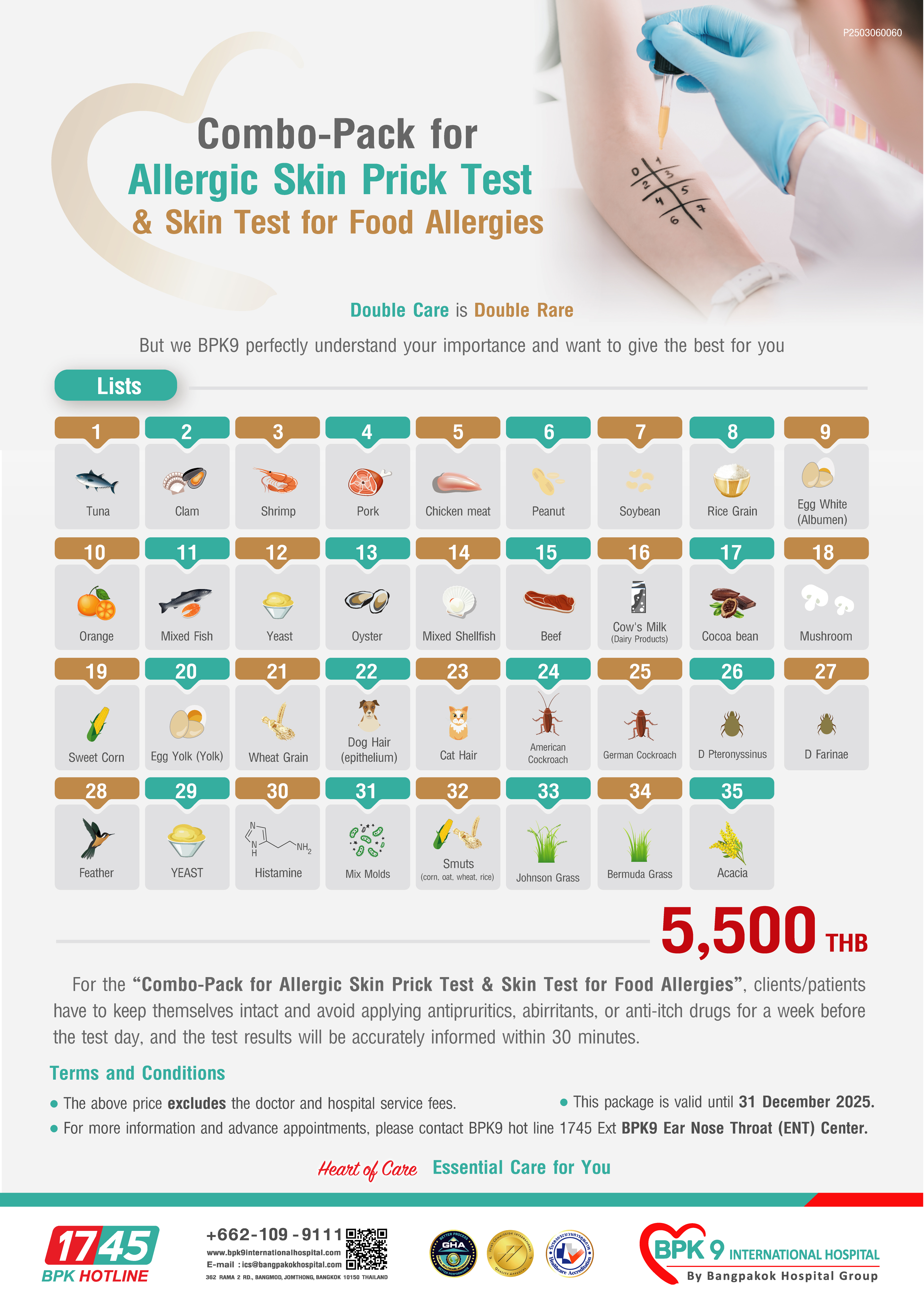Allergic Skin Prick Test for Food & Environmental Allergies

What is a Skin Prick Test?
A skin prick test (SPT) is a diagnostic tool used to detect allergies to food and environmental allergens such as pollen, dust mites, pet dander, and mold. It is one of the most commonly used and reliable methods for identifying allergic sensitization.
How the Test is performed?
During the test, a healthcare provider applies small amounts of suspected allergens to the skin, typically on the forearm or back. A tiny lancet is used to gently prick or scratch the skin’s surface, allowing the allergen to enter. If a person is allergic to a specific substance, a small, raised, red bump (wheal) appears at the site within 15-20 minutes. The size of the wheal is then measured and compared to control substances to determine the likelihood of an allergy.
Accuracy and Reliability of the Test
The skin prick test is considered a reliable method for detecting IgE-mediated allergies, which involve an immediate immune response. However, its accuracy depends on several factors:
- Sensitivity: The test has a high sensitivity, meaning it can detect even mild allergic reactions.
- Specificity: Sometimes, false positives occur, where a person may react to an allergen on the skin test but not experience symptoms in real-life exposure.
- Cross-reactivity: Some allergens share similar protein structures, leading to cross-reactive results. For example, someone allergic to birch pollen may test positive for apples due to similar proteins.
- Medical History Correlation: The test results should always be interpreted alongside the patient’s medical history and symptoms to ensure an accurate diagnosis.
Benefits of Skin Prick Testing
- Quick and Non-Invasive: The procedure is relatively painless, causing minimal discomfort compared to blood testing or oral food challenges.
- Immediate Results: Reactions develop within 15-20 minutes, allowing for prompt assessment.
- Effective for Multiple Allergens: A wide range of allergens can be tested in one session.
- Safe for Most Patients: The test is generally safe for all age groups, including children, as it involves only a minimal amount of allergens.
- Cost-Effective: Compared to blood tests, SPT is more affordable and delivers rapid results.
Limitations of Skin Prick Testing
- False Positives and Negatives: Some individuals may react to substances they are not truly allergic to, or fail to react to allergens that do cause symptoms.
- Not Suitable for Certain Conditions: People with severe eczema, dermatographism (sensitive skin that reacts to pressure), or those taking antihistamines may require alternative testing methods.
- Cannot Diagnose Food Intolerance: The test detects IgE-mediated allergic reactions but does not identify non-IgE-mediated food intolerances or sensitivities, such as lactose intolerance.
The skin prick test is a valuable tool for diagnosing food and environmental allergies, offering quick and reliable results. However, it should always be interpreted in conjunction with a patient’s clinical history and symptoms to ensure an accurate diagnosis. For individuals experiencing allergic reactions, consulting an allergist for proper evaluation and management is essential.
Heart of Care Essential Care for You
